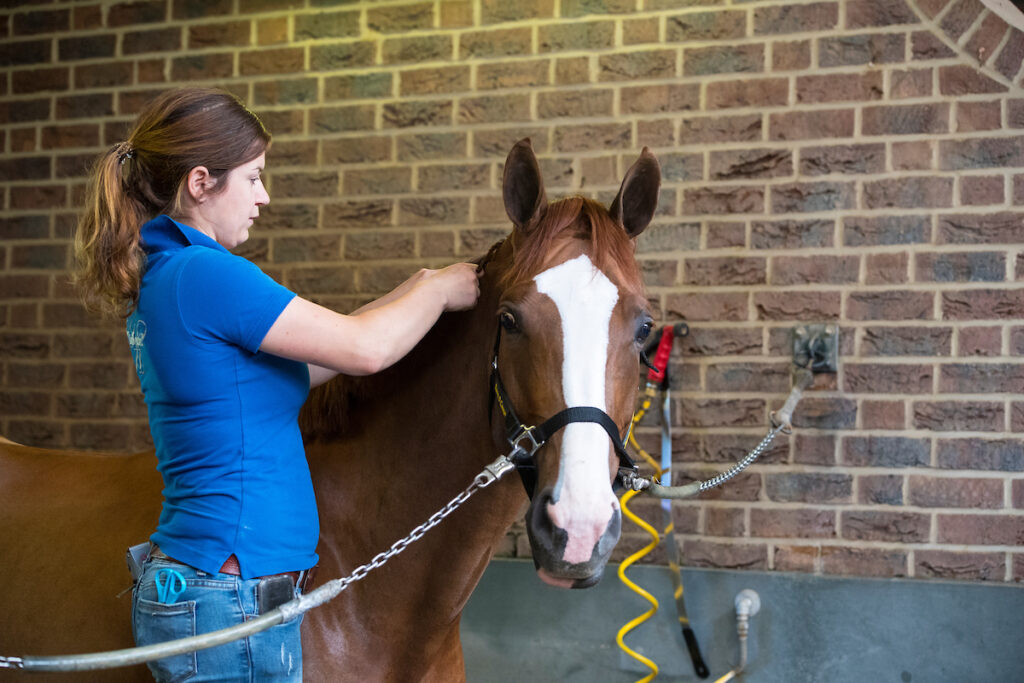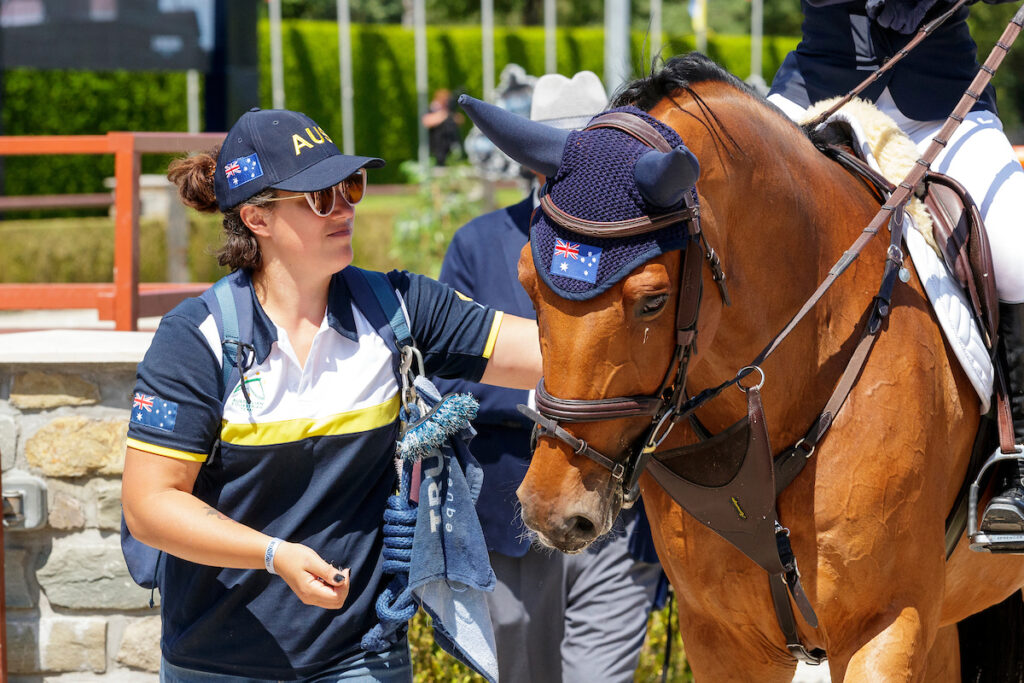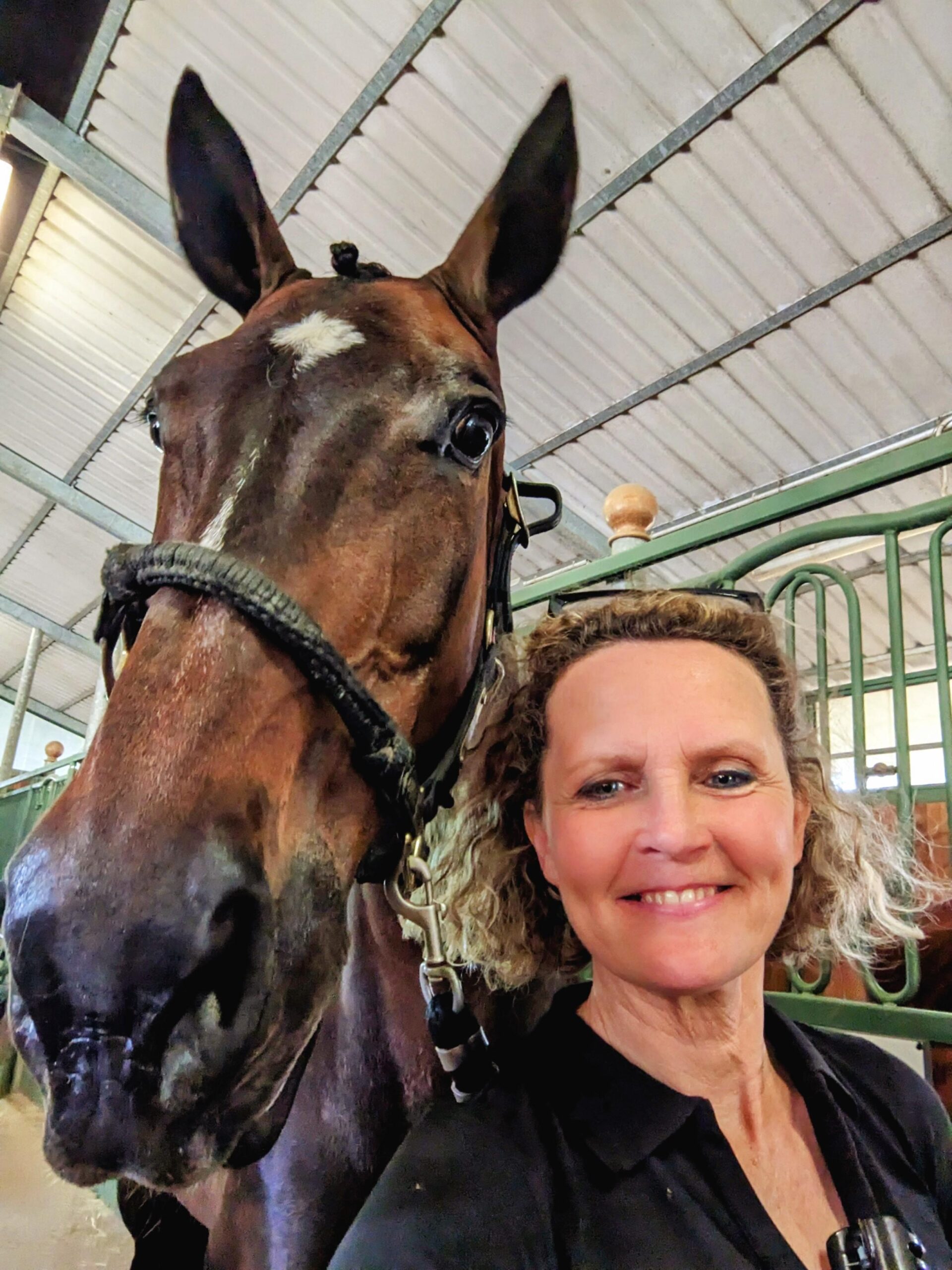McIvor has been grooming since she was 19 years old, and with her 60th birthday on the horizon, she has no plans to stop yet. For some 13 years, she has worked as a private headhunter, finding grooms for clients, working mostly for top riders, but she is adamant that she will not work for those who “are not nice”.
Being tightly knit within the grooms’ community, McIvor has a unique perspective on the industry and shares her experiences of how things can go wrong within an employer/groom relationship and, more importantly, how easy it is to make sure things go right.
Changing of the times
As a groom and as an agent dealing with owners, riders, and their grooming needs, McIvor’s 40 years of experience have seen her navigate the changes in the industry. When she started, grooming was more of a seasonal job. That has changed into it being an annual commitment. “It’s year-round now,” McIvor said. “For the riders and the grooms, there is no downtime really.” The monetization of the industry has also seen a swing away from the motivations of the past. “Before, even the top riders, they did it as a passion and not as a way of creating a lot of wealth,” said McIvor. “People didn’t ride and compete to sell horses or anything like that. It is a different type of person in the industry now. There are a lot of dealers, a lot of riders who train, and a lot of clients. Back when I started, I don’t think there were any clients, or at least it wasn’t a thing. It’s a completely different game nowadays.”

Some things never change
McIvor approaches horsemanship from an old-school perspective. “Horses haven’t really changed at the end of the day,” she said. “The horse still needs to be looked after. And the simpler you can keep the horse care, the longer the horse will last. The fundamentals are very good. It’s when you don’t cover the fundamentals that you begin to get problems.”
Injuries sustained in the modern-day show ring differ from those in the past, particularly when it comes to horses’ legs. “There was no such thing as [pulling] a suspensory ligament back when I started,” she said. “If they got injured, they would have pulled a big tendon – like a flexi tendon, like they would have done out hunting, but there was no ligament damage like there is nowadays.” McIvor cites the transition to sand arenas, from natural grass, as the culprit in this case. “Riding on false ground,” she explained.
Grooms’ roles enter the spotlight
Grooms once hiding in the shadows are now finding a role in the front of the sport. McIvor remembers how it was in the past. “I think they used to portray it as if the rider did everything and you didn’t even see the groom. There was just a person covered in dirt running behind the horse,” she said.
“Whereas now people realize that the role of the groom is actually really important. The grooms are more in the spotlight and rightly so. Because I do believe that the groom has an equal role alongside the rider.” This means that grooms can be equally thanked for success, but also share the responsibility for when things do not go according to plan. “The groom shares equally when they win and also when there’s something wrong. You have to try and figure out between you [rider and groom] what it is,” McIvor said.
Giving grooms, if not top billing, then at least public credit is fashionable, according to McIvor.
“It’s quite trendy to upload pictures of your groom. And it’s maybe not that they did not appreciate them before. They did. But now it’s more cool and they applaud the groom. And why wouldn’t you?”

How to pick and choose a good employer
McIvor is adamant that she will not work with people who feel they are superior to a groom. She uses her intuition to assess new clients. “I wasn’t born yesterday,” she said. “I worked for a lot of people in my time, so I’ve had so many jobs, and I also freelance, so I’ve dealt with a lot of different people. I pick up a lot from what they write and how they write it. And in what tone they speak.”
Overly complaining about former grooms can be a red flag, and money does not enter the equation where McIvor is concerned. “I don’t care how rich they are,” she said. “Recently, there have been some super wealthy people entering the sport, but they’re not actually horse people. They can see a stride, and they’ve been trained. But they haven’t done the time. They’re very rich, and they think they can just buy and sell people – hire them and not treat them as a human. I absolutely will not help them to find grooms.”
Her career has been filled with lessons, some hard-earned, and McIvor is determined to use them to support and protect others in the profession. Through her company, ShowGrooms International, she continues to advocate for grooms and for fair, respectful treatment across the industry.
“I’ve seen what good looks like and what bad looks like,” she said. “And I’ll only ever work with people who treat grooms as equals.”
After more than four decades in the business, McIvor’s insights remain as relevant as ever. In Part 2, coming soon, she shares the tougher stories from her career, the red flags every groom should recognize, and the changes she believes are essential to create a better future for all grooms.


